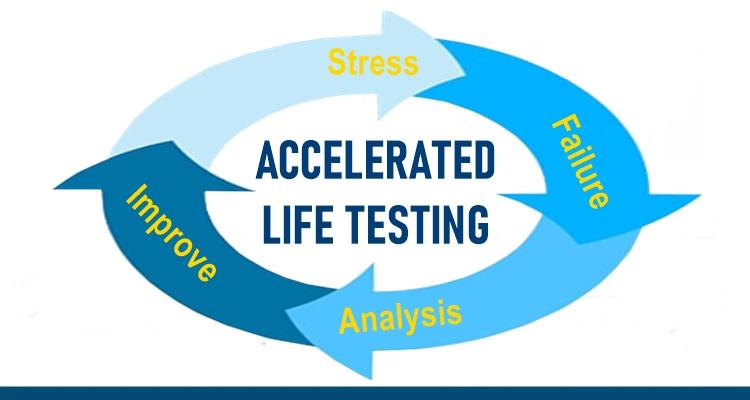Accelerated Life Testing: Reducing Risk and Improving Reliability
When it comes to product development and quality assurance, reliability is a critical factor that can make or break a business. The field of reliability science has contributed significantly to reducing risks in business decisions. Accelerated life testing (ALT) is one such technique that plays a pivotal role in ensuring product reliability while responding to the fast-paced demands of competitive markets. In this technical blog, we discussf accelerated life testing, covering its importance, types, ways to accelerate reliability testing, physical models, and two essential concepts: Highly Accelerated Life Test (HALT) and Failure Mechanism Intensification Test (FMIT).
Why Accelerated Testing?
Business decisions, whether they are related to management or engineering, must be informed by testing results. In today's highly competitive market, quick decision-making is paramount. Accelerated life testing serves as a time-efficient approach to obtain test results. It allows companies to evaluate a product's reliability and durability in a shorter time frame, thus enabling quicker responses to market demands.
Types of Reliability Testing
Reliability testing can be categorised based on product maturity, potential failure modes, and product complexity. Some common types of reliability testing include:
- Component Level Testing: Focusing on the reliability of individual components.
- System Level Testing: Evaluating the overall reliability of an entire system or product.
- Degradation Testing: Monitoring the product's performance over time.
- Step Stress Testing: Gradually increasing stress levels to identify product failure thresholds.
- Highly Accelerated Life Test (HALT): Exposing products to extreme conditions to uncover vulnerabilities.
- Failure Mode Intensification Test (FMIT): Reproducing and intensifying specific failure modes for analysis.
To accelerate reliability testing, various tests can be conducted, each contributing to different management and engineering decisions. Some common acceleration tests include:
- Temperature Testing: Altering temperature conditions to assess the product's behaviour under different thermal stresses.
- Voltage Testing: Varying voltage levels to examine the product's performance and electrical reliability.
- Humidity Testing: Changing humidity conditions to determine the impact on the product's reliability.
- HALT (Highly Accelerated Life Test): Applying extreme conditions to shorten time to failure and uncover weaknesses.
- HASA (Highly Accelerated Stress Audit): Subjecting products to severe conditions to identify design and manufacturing defects.
- FMIT (Failure Mode Intensification Test): Replicating and intensifying specific failure modes to better understand their causes.
Physical Models at Accelerated Testing
In accelerated testing, physical models are used to calculate acceleration factors and reliability at usage conditions. Some commonly employed models include:
- Arrhenius Model: This model relates temperature to the rate of chemical reactions and can be used to predict how products will perform under different temperature conditions.
- Eyring Model: This model provides insights into how stress factors, such as temperature, affect the time to failure.
- Inverse Power Law: This model is used to calculate acceleration factors and predict the reliability of products when subjected to varying levels of stress.
Highly Accelerated Life Test (HALT)
HALT is an essential concept in accelerated testing. It is designed to shorten the time to failure significantly. Some benefits of HALT include:
- Product Characterisation: Determining operational and destructive limits.
- Supplier Qualification: Ensuring product reliability from suppliers.
- Failure Mode Detection: Identifying potential failure modes during the manufacturing phase.
- Field Failure Reproduction: Replicating field failure modes in a controlled environment.
- Understanding Physics of Failure: Gaining insights into the underlying causes of failures.
Failure Mechanism Intensification Test (FMIT)
FMIT is an integral part of accelerated testing and is designed to intensify specific failure mechanisms. The process for defining test profiles for HALT and FMIT involves careful consideration of FMEA (Failure Modes and Effects Analysis) and FTA (Fault Tree Analysis). Effective HALT and FMIT can result in significant time and cost savings.

